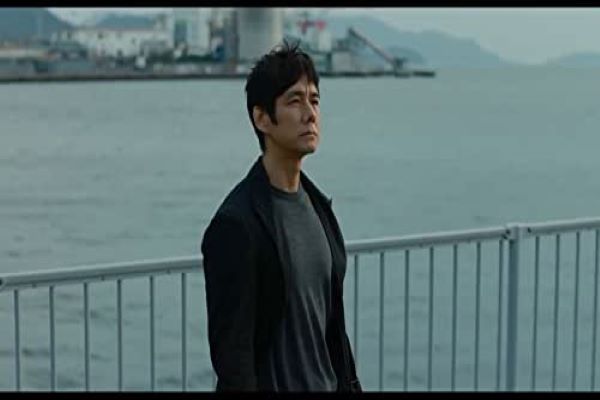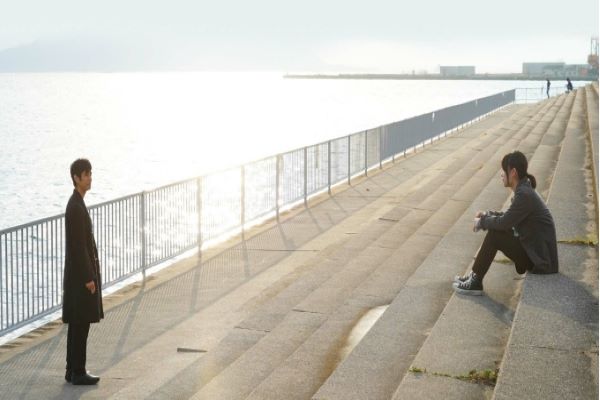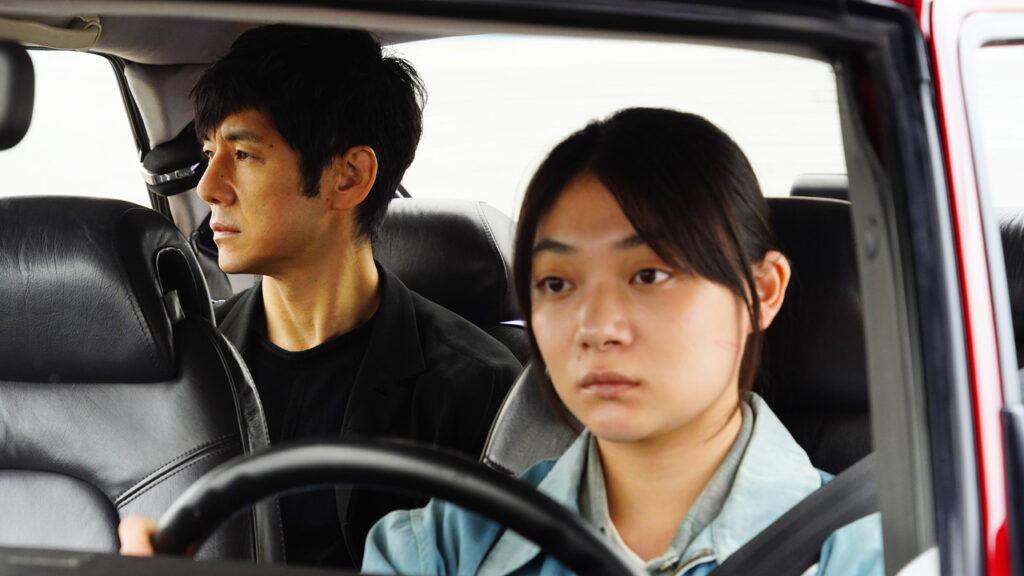Ryusuke Hamaguchi’s immensely philosophical film Drive My Car not only shows the motion of the car but also depicts the mysterious and enigmatic motion of life. Life itself is an enormous mystery with numerous ups, downs, and turns. Multiple times, the path is obscure and filled with uncertainties. There is no end to it. Drive My Car shows a man’s deep unconditional love for his wife is not sufficient enough to refrain her from infidelity. Even after twenty years of marriage, he can’t really occupy her heart fully. This film also shows the same man can form a deep emotional bond with a lady chauffeur barely in a few weeks. It shows through a multilingual theater that when language is not a medium of communication, human emotions and body language form a distinct form of heartfelt communication. With slow but meaningful dialogues, Drive My Car tries to dig deeper into human psychology. It vividly shows how alienated individuals struggle to come to the terms with life.
Actor and theater director Yusuke Kafuku (Hidetoshi Nishijima) is happily married to his screenwriter wife Oto (Reika Kirishima). The bizarre form of personal trait Oto has is that story ideas come to her mind only during sex and at the time of orgasm. However, she forgets it and Kafuku reminds her the same next morning while driving her to the office. One day, Kafuku’s flight to the Vladivostok Theater Festival gets canceled and he returns home a short while later only to discover that Oto is having sex with her frequent collaborator and young actor Koji Takatsuki (Masaki Okada). However, Kafuku leaves the spot without making his presence felt. One day, while leaving for work, Oto tells him that she wants to discuss something with him at night. Unfortunately, Oto dies due to a brain hemorrhage that day and the discussion topic remains unknown. Oto’s sad demise devastates Kafuku and he breaks down during a show of Anton Chekov’s classic play Uncle Vanya.

Two years later, Kafuku is appointed to a two-month residency in Hiroshima to direct a multilingual theater adaptation of Uncle Vanya. Participants speak multiple languages like Mandarin, Japanese, etc, and one actress communicates via Korean Sign Language. Despite a huge age gap, Oto’s former lover Takatsuki is cast to play the title role of Uncle Vanya. As per the residency norms, a young lady chauffeur named Misaki Watari (Toko Miura) is assigned to drive Kafuku’s car, a red Saab 900. Kafuku reluctantly agrees to the norm as Watari looks skilled and confident. One night after rehearsal, Kafuku meets Koji in a bar, and both of them discuss their relationships with Oto. Koji admits his affair with Oto. Both of them agree that Oto was a great woman. Kafuku starts bonding well with Watari and mentions that had his daughter been alive, she would have been of Watari’s age. She tells Kafuku about her abusive mother who passed away five years back in a mudslide.
Kafuku meets Koji again in a bar and tells him that he knew Oto’s infidelity but kept quiet because of the fear of losing her. Koji beats up a man to death for taking his photo and later gets arrested during rehearsal. Theater programmers make it clear that either Kafuku will play Uncle Vanya or the play will be canceled. Kafuku and Watari now share an emotional bond. They drive to Watari’s childhood home and throws flowers in memory of Watari’s late mother. Kafuku regrets that had he not driven around the city on that day, he could have saved his wife Oto. Watari reveals and regrets that had she wanted, she too could have saved her mother from the mudslide. They share the agonies of each other and then, return to Hiroshima. Kafuku agrees to play Uncle Vanya and delivers a brilliant performance. The film has a disconnected ending wherein Watari is seen purchasing groceries in a supermarket in South Korea, and her dog is seen waiting for her in the backseat of her car.
Drive My Car shows how humans with the strongest ties fail to understand each other. On the contrary, it also shows how strangers can very well be part of our lives. Much like Abbas Kiarostami, Ryusuke Hamaguchi has used the car as a medium to have meaningful, deep, and heartfelt conversations. Hamaguchi has used the subplot of the multilingual theater to show that language is not the sole medium of communication. The participants do not speak a common language, still, they can play their roles. Drive My Car shows that the most important aspect of life is how effortlessly we can become part of each other’s lives. One of the best scenes of the film is when instead of the back seat, Kafuku sits at the front seat beside Watari and both of them engage in an emotional discussion raising their hands while smoking cigarettes. This emotional and memorable scene shows how quickly and deeply two strangers become part of each other’s lives. Life is all about meeting and knowing the unknown and discovering its enigmatic avenues.

Kafuku asks Watari to take him to her village. They reach her village covered in snow, stand in front of her destroyed house, and place flowers in memory of her mother. Watari informs Kafuku that her mother had another personality named Sachi who was 8 years old and appeared for the very first time when she was 14 years old. Sachi would often cry, stumble while walking, sit still, and appear to console her when her mother would beat her up terribly. Kafuku tells her that from now onwards, they will take care of each other. The last scene of the film may confuse the viewers. Watari is seen shopping in South Korea without having any correlation with the earlier plot. Does the filmmaker want to detach Watari from her troubled past? Or does he want to detach the viewers from the sufferings of both Kafuku and Watari? The questions remain unanswered.
Drive My Car shows how alienated individuals hide their emotions and struggle for their existence in this world. Living life alone is never easy. When both Kafuku and Watari are lonely and emotionally shattered, they desperately seek each other’s shelter. Companionship reduces the emotional burden to a great extent and smoothens the way of life. The film leaves multiple unanswered questions. One of those questions is why Kafuku casts Koji to play Uncle Vanya despite his very young age. It is definitely not for revenge. Does Kafuku want to know Oto’s stories narrated only to Koji? Or does he want to cherish Oto’s memories spent with both him and Takatsuki? Or is there any other reason? Viewers do not know the answers.
Drive My Car will be remembered for its deeply emotional and extremely detailed screenplay. Even though it is adapted from Haruki Murakami’s short story Drive My Car from his 2014 collection of short stories Men Without Women, Hamaguchi has done multiple additions to it. He has changed the yellow Saab 900 in the story to the red Saab 900 in the film to match the Japanese landscape. The subplot of the multilingual theater adaptation of Uncle Vanya has been largely developed to add Watari’s character. It is so well written and structured that viewers get to know and feel the characters. Drive My Car is enriched with magnificent visuals of Japan by cinematographer Hidetoshi Shinomiya. His camera beautifully captures the Japanese snowy landscape, calm and quiet night scenes, highways, and Characters while having conversations inside the car. Throughout the film, his camera turns into a meditative mode, keenly observes the characters, and tries to unravel their mysterious lives.
Hamaguchi uses multiple shots quite similar to the filmmaking styles of great Kiarostami. Much like Kiarostami’s signature style, the dialogues between Kafuku and Watari mostly unfold inside the car. The overhead shots of the moving car on the highways are captured from a long distance. The camera focuses on a single character inside the car as well as the surrounding. These shots meticulously portray the loneliness of the characters and also establish them in the surrounding. In spite of having a companion in the car, both Kafuku and Watari appear as alienated individuals with personal tragedies. Both Hidetoshi Nishijima and Toko Miura have brilliantly delivered emotional yet restrained acting performances. The background score by Eiko Ishibashi in the film is mostly melancholic and soul-searching. Drive My Car was nominated to compete for the prestigious Palme d’Or at the 2021 Cannes Film Festival where it won three awards including Best Screenplay. It has been nominated for Best Picture, Best Director, Best Adapted Screenplay, and Best International Feature Film at the 94th Academy Awards. It won the Best Foreign Language Film award at the 79th Golden Globe Awards.
